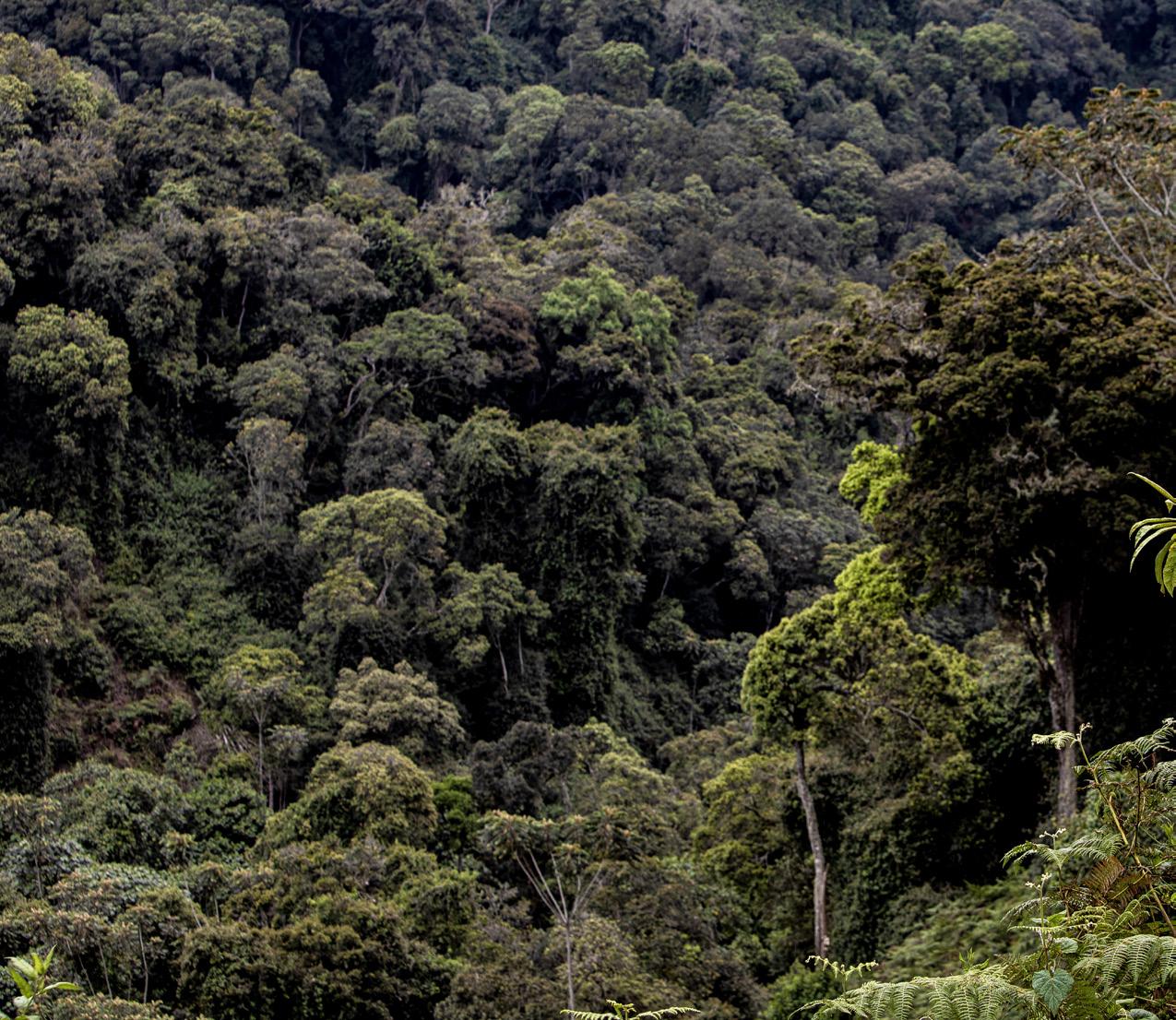
9 minute read
Experiments with
Experiment stations give answers about forests future
Will Africa’s tropical forests cope with climate change? This is an area where there is remarkably little research. To learn more, Göran Wallin and Johan Uddling, together with local researchers, have started a project in Rwanda, which includes three unique experiment stations.
Advertisement
In early February, the GU Journal visited these stations in Rwanda.
WE ARRIVE IN Kigali at seven-thirty in the evening. Before we get off the plane we are told that plastic bags are banned in Rwanda and must be discarded immediately if we have brought any with us.
When we finally leave the airport after a couple of baggage checks, a master’s student, Carl Svensson, is waiting for us. Soon we also see Mao Birgirimana driving the University’s jeep, specially commissioned from Sweden for field studies in Rwanda. We just manage to load all the luggage into the jeep before the rain starts.
THIS IS NOT an ordinary rain shower. This is torrential rain, there is thunder and lightning as Mao drives out of the car park.
Rwanda is known as “the land of a thousand hills” and this is especially true for Kigali; the roads go up and down as well as in circles. We drive past the bus
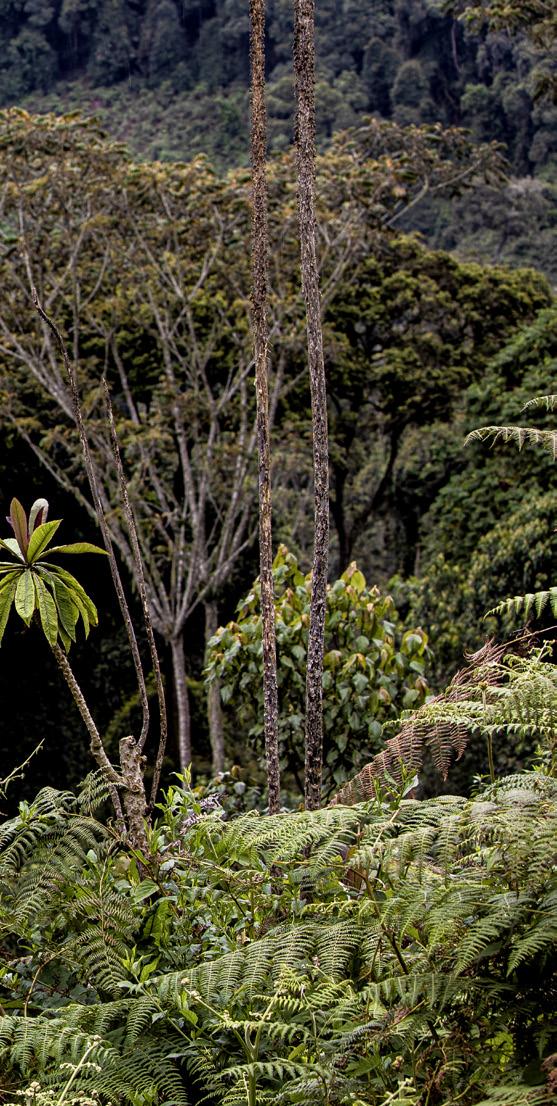
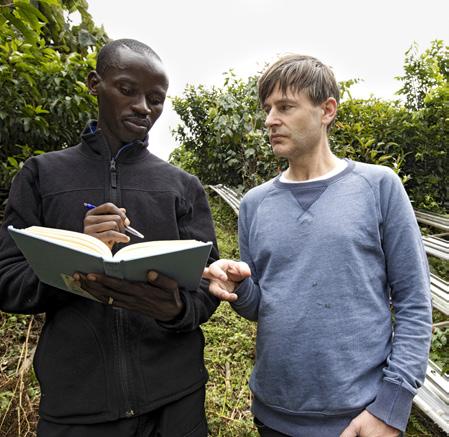
Doctoral student Etienne Zibera discusses with Johan Uddling.
Myriam Mujawamariya explains photosynthesis to some students.
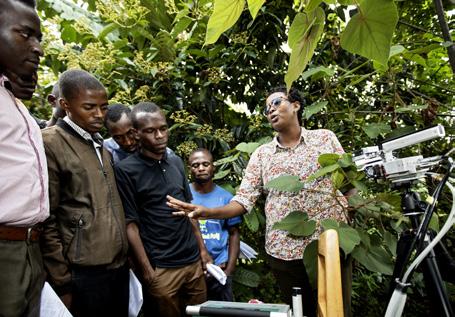
stop, which is in a valley but suddenly we come to a halt in the midst of a traffic jam. We are told that the bus stop is flooded with two metres of water and that we have to turn around.
Our destination is Huye in southwestern Rwanda, a city with 50,000 inhabitants. The distance from Kigali to Huye is 80 kilometres, as the crow flies, but that is of little consequence in a country full of winding roads, instead we are told that we will have to drive 130 kilometres. In the dark and the pouring rain it takes us almost four hours to get there.
IN A PARTNERSHIP with Sida, the University of Gothenburg is involved in several projects in Rwanda. One of the most important projects started in 2003 and involves a partnership on environmental research between the University of Gothenburg, the University of Rwanda and the Rwanda Agriculture and Animal Resources Development Board. Göran Wallin, who has been working within the partnership since its inception, tells us that it has spawned several doctoral and master’s degrees, as well as student exchanges. – We hope to start a double degree programme shortly, enabling the doctoral students to graduate from both the University of Gothenburg and the University of Rwanda.
– In the current project, which is supported by the Swedish Research Council and Formas, we are examining how tropical trees, which have evolved in a warm and stable climate, may be impacted by climate change. The hypothesis is that the trees will not be able to handle the change very well, but we really do not know, as surprisingly little research has been conducted on tropical forests.
THE FOLLOWING MORNING we head out to one of the three experiment stations set up by the research team, the one in Rubona, located at 1,600 metres above sea level. – The station in Makera is located at 1,300 metres above sea level, and the one in Sigira at 2,400 metres above sea level, says Johan Uddling, as the university’s jeep takes us along a bumpy road, full of potholes and
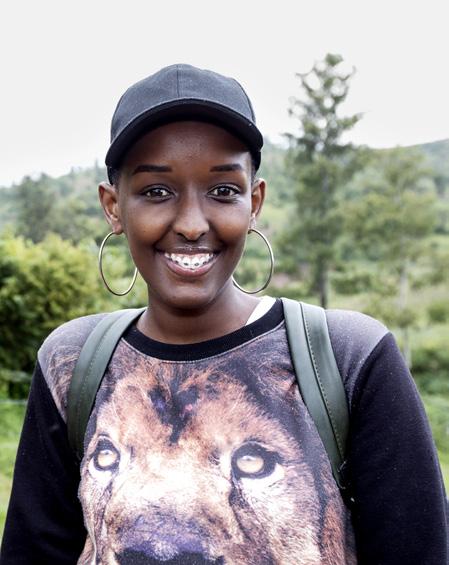
mud from landslides after the last few days of torrential rain.
This is a type of plant laboratory that is truly unique. Each station has 18 areas where 20 indigenous species have been randomly planted and exposed to six different combinations of water and nutrient regimes. As they are located at different altitudes, they are also exposed to varying levels of heat. All in all, the project includes 5,400 trees, in addition to potted plants. Which species thrive in competition with each other and which ones ultimately die? How might climate change impact the plants, and will they be able to adapt?
– Carapa grandiflora is one of the trees that are sensitive to higher temperatures, Johan Uddling explains. It is my personal favourite of all the trees included in the project, a love that I share with the country’s chimpanzees, who eat its fruit.
A GROUP OF 100 students from the School of Forestry, Biodiversity and Conservation is expected to visit.
– We have had to buy a huge amount of lunch so that it is enough for both the students and us who work, explains Göran Wallin.
All the students speak English. I ask whether that is perhaps due to the fact that there are several local languages in the country, but that is not the case. The native language of the vast majority of Rwandians is Kinyarwanda. Rather, it is simply the case that English is the language used to teach natural sciences in schools.
Myriam Mujawamariya is one of the lecturers the
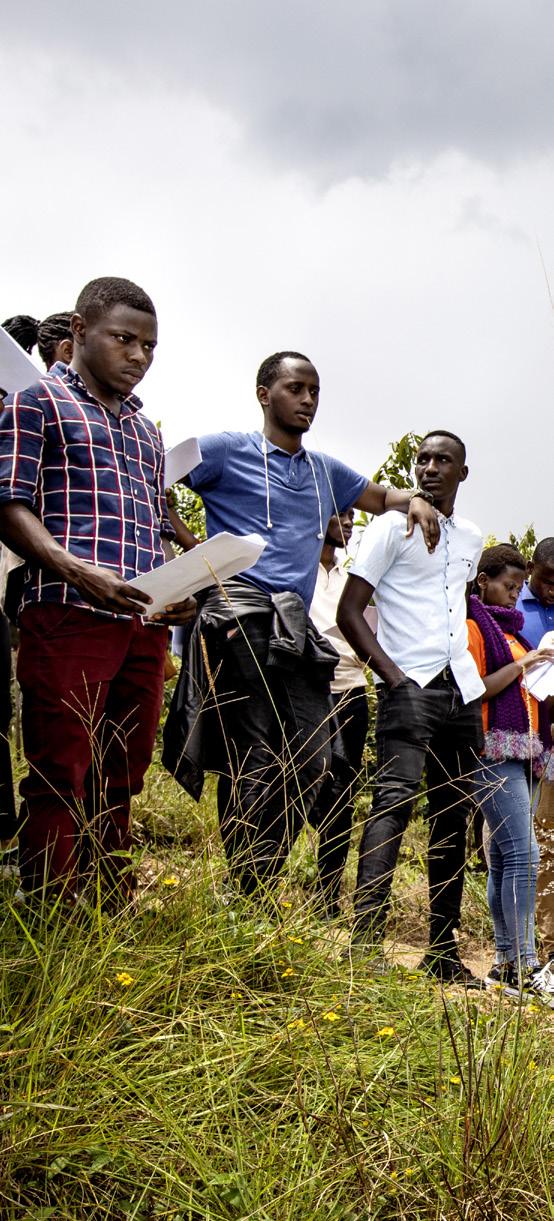
▲ Sabine Iradukunda Uwase was one of about a hundred students who visited the experimental station in Rubona, where Göran Wallin, among others, lectured. – It’s much more fun to come out in reality than just to read books, she says.
students will meet; she has almost completed her doctoral studies. She talks about photosynthesis and temperature sensitivity. Another doctoral student, Aloysie Manishimwe, is surrounded by a group of students as she talks about how the temperature of a leaf can be 40 degrees even though the air temperature is only 25 degrees, while doctoral student Bonaventure Ntirugulirwa, gesticulating in an animated fashion, explains how sun and shade impact different trees in different ways. The students are obviously enjoying their visit. – We get to see things in real life, it is so much better than just reading books, Sabine Iradukunda Uwase explains.
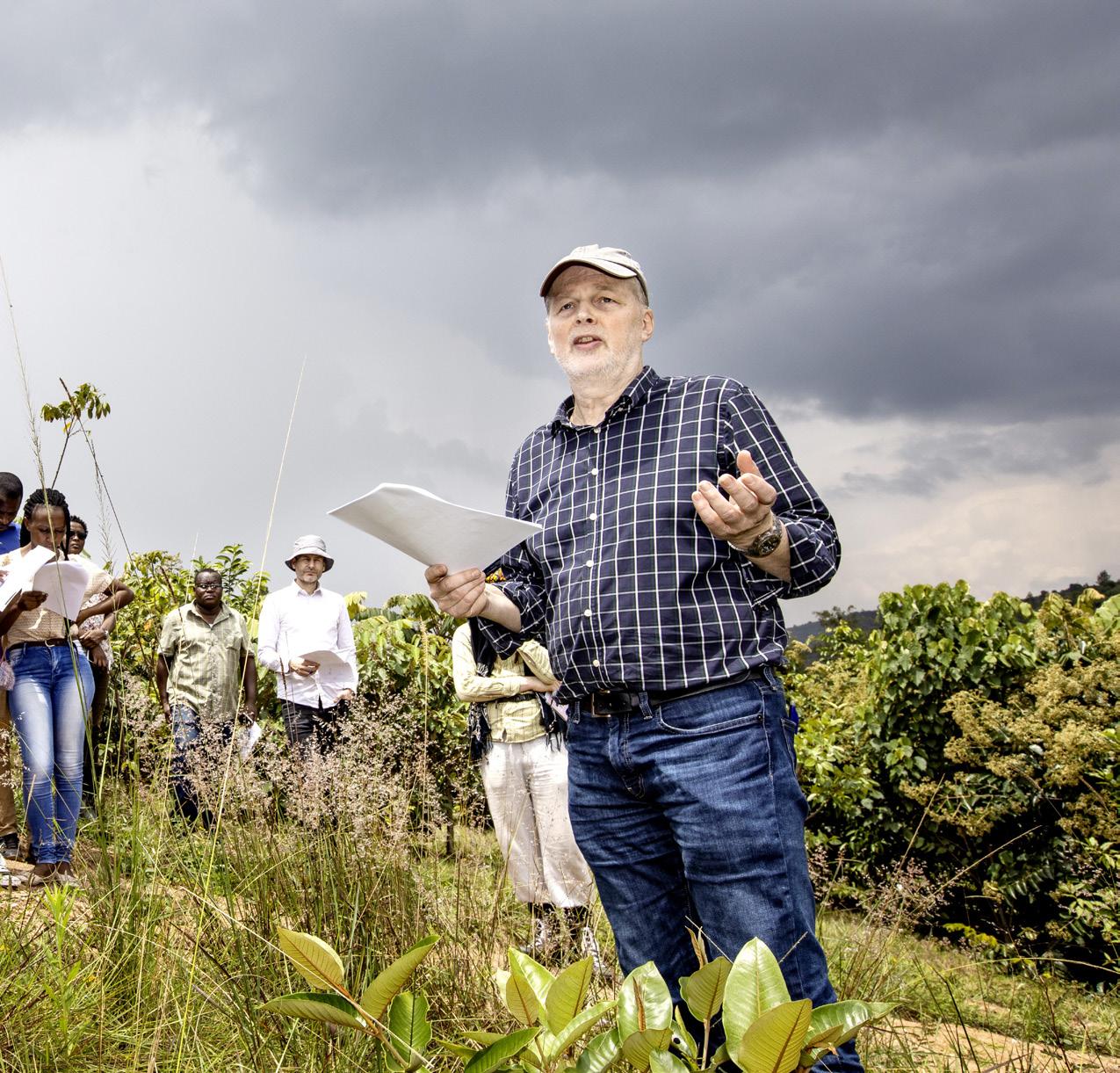
On Thursday, this research station will be on display again, but this time as part of a workshop that has been planned for months. The preparations have not only involved inviting the relevant people – they also involved getting principals and officials to sign documents and give their approval.
– THERE IS A LOT of red tape, Johan Uddling points out. But the programme we have put together will be really interesting with several doctoral presentations and attended by large number of central policy makers. So far it is only Wednesday and we are off to Nyungwe, the best preserved rain forest in Central
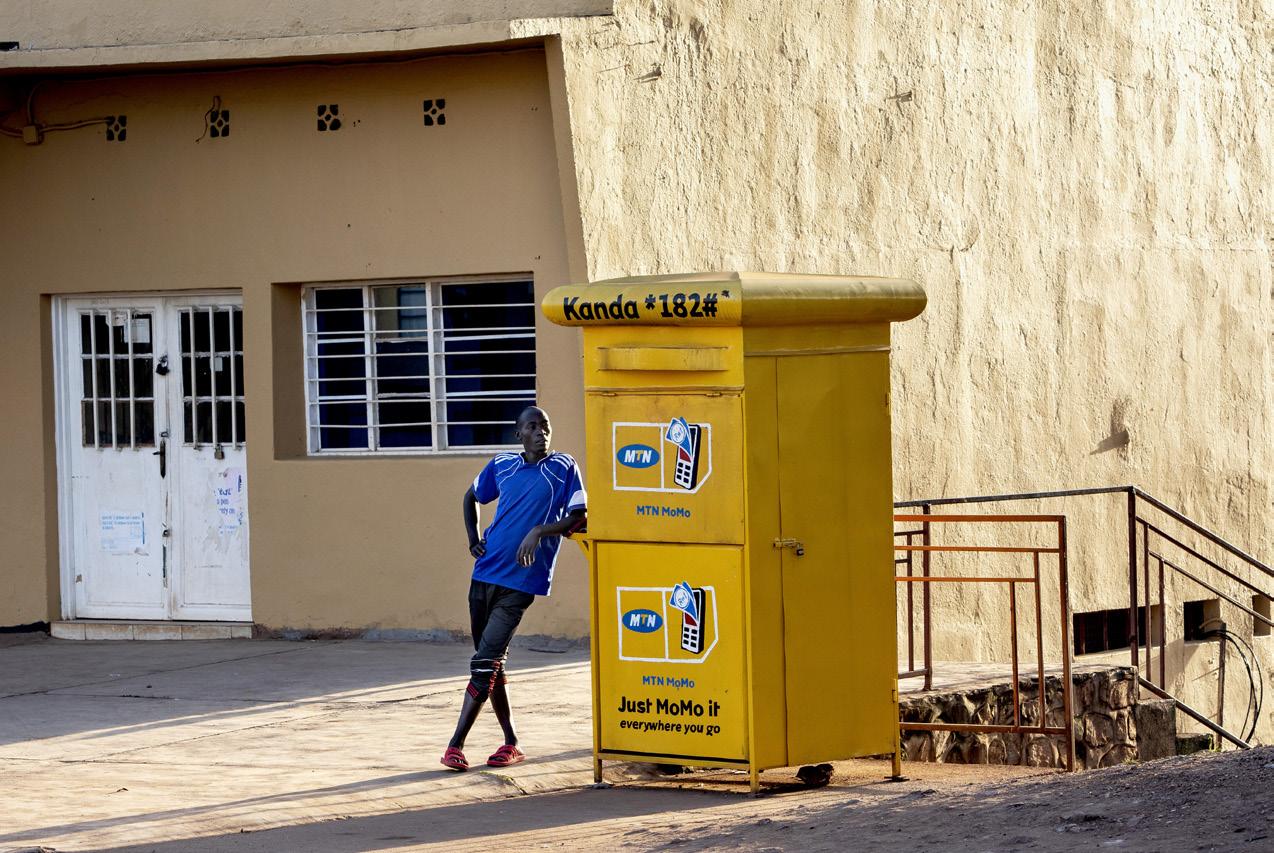
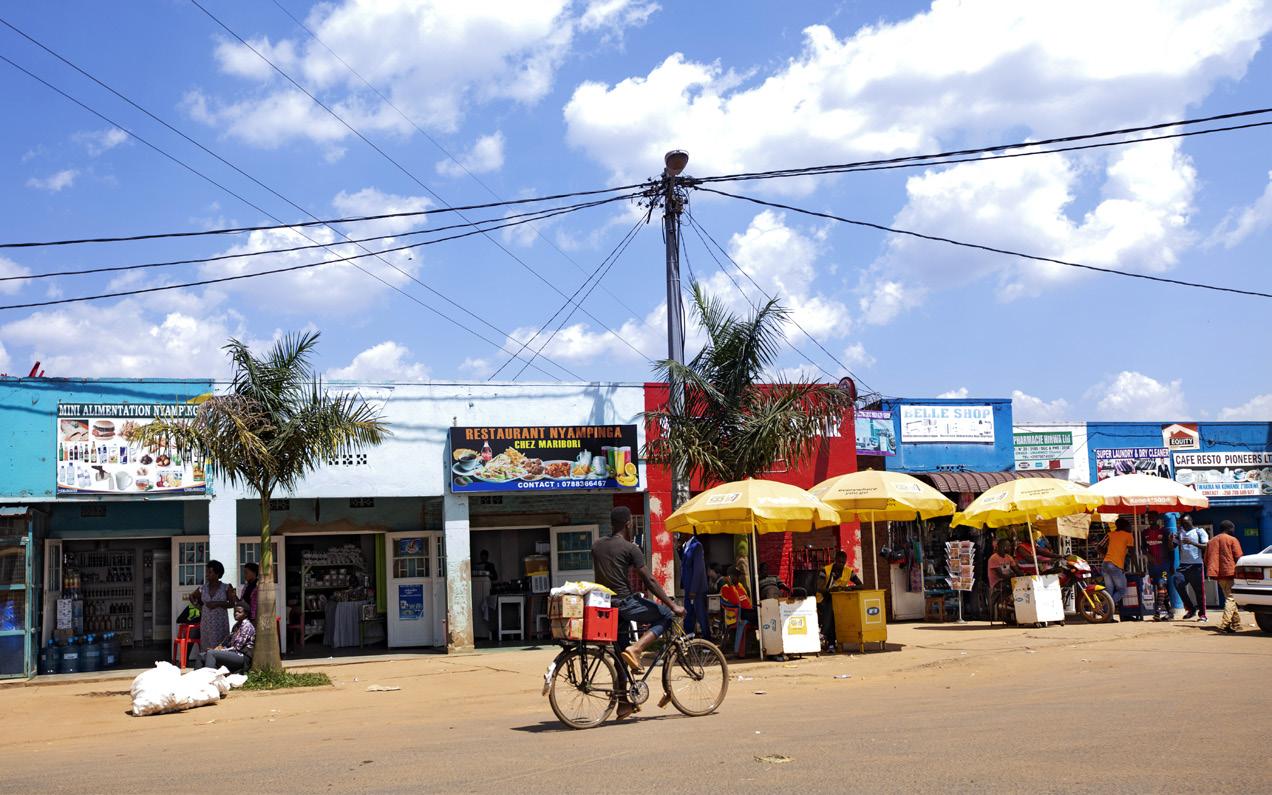

Africa. Besides its importance as a carbon sink, it is also essential for the region’s access to water; both the Congo and the Nile have sources here.
Recently, Rwanda has been involved in several conflicts with neighbouring Burundi. That is why soldiers are posted along the route. Suddenly, we have to stop; a large group of baboons is slowly sauntering across the road.
BEFORE VISITING the rain forest, we have to make a detour to a guard station to ask about the drone. This is because Johan Uddling and Göran Wallin have both spent a lot of time getting documents approved so that two Rwandan technicians can film the forest from the air using a drone. Even though filming has been permitted, something seems to be missing.
– You will get permission, says the guards at the station. Just not today.
Taking photos with an ordinary camera is fine, however, and as we continue towards Nyungwe, we stop repeatedly to photograph the magnificent view. At 2,500 metres above sea level, the clouds are nestled between the lush green mountains, and the heights are dizzying.
When we arrive, two guards accompany us down the steep paths through the forest, one to take point and one to form the rear-guard. Each visitor is also given a bamboo pole for balance, which is particularly welcome, as the ground is wet and slippery. But we are fortunate enough to have yet another guide with us, Brigitte Nyirambangutse, who holds a doctorate from the University of Gothenburg, and is an expert in biodiversity and carbon flows.
Climbing downhill is fine, but uphill is more of a struggle. We have not gone very far but we still need to hurry before it gets dark.
When we arrive, we meet Bonaventure Ntirugulirwa, who will be participating in tomorrow’s workshop. He talks about differences between cultures and that Africans, for example, are not always very conscientious about punctuality.
När det var som värst täcktes Rwandas yta av bara 17 procent skog, nu har vi dock nått regeringens mål om 30 procent.
DISMAS BAKUNDUKIZE
Rwanda is a poor country where the memory of the 1994 genocide is still very much alive. But it is also a country of strong progress..
– But tomorrow, we are holding a European workshop, everyone must be at the venue no later than 10 o’clock.
The Thursday workshop does not only include doctoral presentations, but also a speech by Dismas Bakundukize, the head of the Forest Management Agency at the Rwanda Water and Forestry Authority. He discusses how population growth in the 20th century has led to deforestation, causing major problems with soil erosion, as well as the planting of exotic species, such as fast-growing eucalyptus.
– AT ITS LOWEST point, Rwanda was covered by only 17 percent forest, but now we have reached the government goal of 30 percent. Our new goal is for 85 percent of agriculture to include afforestation using indigenous species. The partnership between the University of Gothenburg and the University of Rwanda is one way of facilitating this.
Another participant was Donat Nsabimana, lecturer at the University of Rwanda, who received his doctorate at the University of Gothenburg in 2009.
The workshop concluded with traditional entertainment. Drums, horns and singing accompanied by the stomping feet of dancers with bells around their ankles. – I have been in Rwanda several times, Göran Wallin explains. All major events end with dancing, music and something to eat and drink, that’s just how it is ...
Facts
Tropical montane forests in a warming world The project examines the climate sensitivity of indigenous tree species in Rwanda. It includes three experiment stations, located at 1,300, 1,600 and 2,400 metres above sea level, where a total of 5,400 trees have been planted to examine how they respond to temperature, access to water and nutrients. The project is funded by the Swedish Research Council and Formas and is headed by University Lecturer Göran Wallin and Professor Johan Uddling, both from the Department of Biological and Environmental Sciences.










